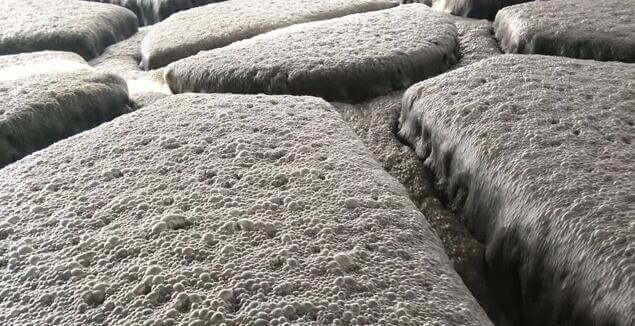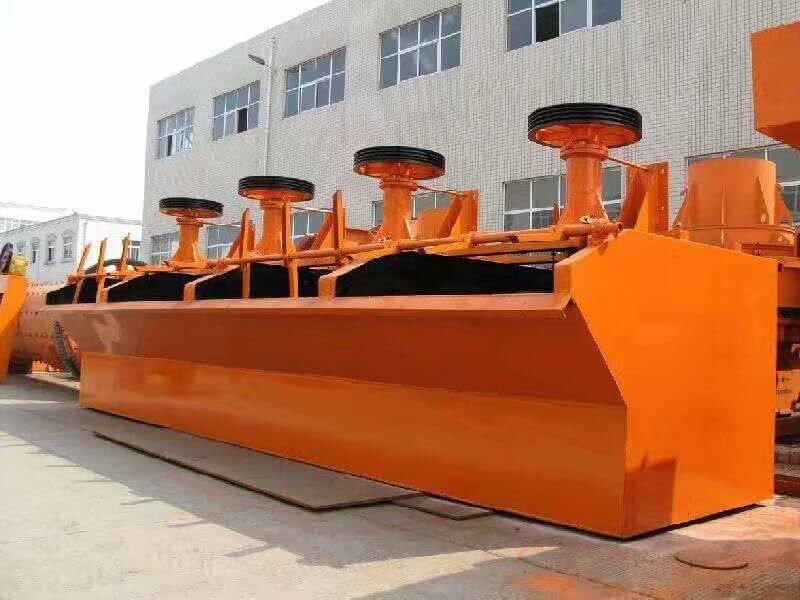One of the essential methods in flotation machine operation technology is to observe the foam in the flotation machine and judge the flotation effect’s quality according to the foam’s change.
Experienced flotation machine operators can judge the causes of the changes by observing the various changes in the apparent phenomenon of the foam to adjust in time to ensure that the flotation process is carried out under optimal conditions.
Whether the flotation worker can correctly adjust the amount of flotation agent added, the amount of concentrate scraped out, and the amount of medium ore circulation depends first on his correctness in judging the appearance of the flotation foam. We mainly obtained observing and evaluating from the severe and continuous summarization of practical experience. The appearance of flotation foam includes the phenomenon of foam’s virtuality, size, color, luster, shape, thickness, strength, fluidity, sound, etc. These phenomena are mainly caused by the type, quantity, particle size, color, luster, and density of minerals attached to the surface of the foam, the amount of foaming agent, and so on.
The Effect of Foam Change on The Flotation Effect
1. The Virtual and Solid Bubbles
The ore particles attached to the surface of the bubbles are numerous and dense, and the foam is solid. The ore particles attached to the surface of the bubbles are few and thin, the foam is empty, the raw ore grade is high, the dosage of the agent is appropriate, and the foam is solid. To obtain the ideal flotation effect, the mineralized foam in the roughing tank should be solid, and the mineralized foam in the sweeping tail tank should be virtual.
For the same flotation operation point, the flotation foam change also reflects the flotation situation change. When the grade of raw ore is high, and the dosage of the flotation agent is appropriate, the flotation foam in the roughing head will appear normally solid. When there are too many inhibitors and too few collectors, the flotation foam will become virtual. In some mineral flotation operations, the amount of collector and activator is too much, and the amount of inhibitor is too small, which will cause the flotation foam to be too solid and cause the phenomenon of “caking,” which is not conducive to the flotation effect.
2. The Size of Flotation Froth Bubbles
The bubbles’ size on the foam layer surface often varies with the nature of the ore, the chemical system, and the flotation area.
The flotation machine operator can obtain the ideal mineralized foam in the production field by adjusting and selecting the appropriate bubble size. Of course, different ores and flotation operations have various sizes of bubbles. In the flotation operation of sulfide ore, the bubbles with a diameter of 8-10cm or more are generally called large bubbles, those with a diameter of 3-5cm are medium bubbles, and those with a diameter of 1-2cm or less are tiny bubbles.
The size of flotation froth bubbles is closely related to the mineralization of the bubbles.
- When the degree of bubble mineralization is good, the size of the flotation foam bubbles is medium, so medium bubbles are more common in the rough selection area and the selection area;
- When the degree of bubble mineralization is poor, the flotation foam bubbles are easy to merge into large bubbles;
- When the degree of mineralization is inferior, although tiny bubbles form large bubbles through continuous merger, they cannot withstand the influence of the fluctuation of the pulp surface and are easily broken, resulting in more small bubbles at the tail of the sweeping area.
The flotation reagent usually controls the size of the flotation froth bubbles. The greater the amount of foaming agent, the smaller the bubbles. The greater the amount of lime, the larger the bubbles. The greater the amount of inhibitor, the smaller the bubbles.
3. Color
The darker the color of plankton in the sweeping area, the greater the metal loss. The darker the color of plankton in the rough beneficiation area, the better the concentrate quality.
4. Gloss
Roughing of flotation sulfide minerals
- The mineralization of the foam in the selected area is good, its metallic luster is strong.
- The foam in the swept area has poor mineralization, showing the vitreous luster of a water film.
If the sweeping foam appears semi-metallic luster, it indicates that the metal loss is large.
5. Outline
When the foam mineralized by the medium hydrophobic ore particles is formed on the surface of the pulp, the water is sufficient, and the outline of each bubble is relatively clear. The foam stays on the surface of the pulp for a long time, and the minerals are hydrophobic. Bubble outlines are blurred.
6. Thick and Thin
The amount of foaming agent and the degree of bubble mineralization affect the thickness of the foam layer. The ore grade is high, the concentration is high, the mineralization degree is good, and the foam layer is generally thick. Otherwise, it is thinner. If the floating ore particles are too coarse, forming a thick foam layer is difficult. In the selection area, the pulp surface is low, the foam layer is thick, and the concentrate grade is high. The recovery rate is high.
7. Brittleness and Stickiness
The brittleness of the foam is too large, the stability is poor, it is easy to break, and sometimes it can’t scrape out. On the contrary, the foam is too viscous and stable, making the flotation machine “run out,” destroying the normal flotation process and causing difficulty in conveying the concentrate. Excessive foaming agents, a large amount of sludge, and soluble salts such as lead sulfate in the oil or the ore can make the foam too stable.
8. Flotation Foam Sound
When the foam is scraped into the foam tank by the scraper, it makes a “sand” sound, which is often because the foam contains a large number of minerals with a large specific gravity and a coarse particle size.
The above eight points are the flotation operation techniques for judging the flotation effect. The appearance of foam varies with the flotation area, but there are often specific phenomena in specific areas. It should grasp several prominent characteristics to observe the foam situation. The flotation cells that have a significant impact on the concentrate grade and recovery rate mainly include:
- The final concentrate flotation cell.
- Several flotation cells before the operation.
- Each flotation tank with flotation agent and the flotation tank at the tail of the sweep.
LATEST PRODUCTS
Twin Screw Feeder
【Feeding Capacity】 10-160 t/h【Power】 2.2-…
Tubular Screw Conveyor
【Capacity】6-50 m3/h【Procesible Material】 …
Heavy Plate Feeder
Capacity: 100-240 m3/h Power: 15-45 kW Speed: 0…











